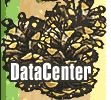Suffield, settled in 1670 as the Stoney Brooke Plantation, was part of Massachusetts until 1749 when it was annexed to Connecticut. According to the town records of January 12, 1670/71, it was decided that "a convenient piece of land of about 20 to 30 acres (be) laid in center of town for Common use as to set the Meeting House on or School House or for a Training Place, or any other Publick use, to be left in Common." The first meetinghouse was built upon this common in about 1680 "southeasterly from the burial place" leaving enough room on high ground for "training."
The second meetinghouse was built in 1700 on the site of the first and by 1704 a school house had joined the meetinghouse on the common. In addition to being the site of the meetinghouse and first school house, the common was also used as a pasture and a training ground.
Suffield was started as a framing community and early on, tobacco was an important crop. It helped finance the construction of many of the gracious 18th and 19th century homes presently ranged around the green. These buildings and the others surrounding it are documented in the Suffield National Register Historic District nomination.
A strong presence on the green is the Suffield Academy which started as a private boarding school in 1833 under the sponsorship of the Baptist Church. Four of its principal buildings face the northwest portion of the green. The most important one is the Kent Memorial Library (1898) designed by Daniel H. Burnham. The Baptist Church situated across the green from the Academy was built in 1840. In 1869, the present Congregational Church was built south of the Academy.
By the mid 1850s the green had become neglected and used as a source of sand and gravel. It was converted to a "park" in 1858 when it was redesigned by Henry Sykes, a Suffield architect.
Civic and earlier commercial buildings were located around the intersection of North Main Street and Bridge Street prior to an Urban Renewal project in the 1960s. The town hall, post office, Masonic Lodge and small stores that produced a cohesive streetscape were replaced with larger buildings spaced further apart designed not for the pedestrian but for the automobile. As a result, the cohesive and lively nature of that portion of the streetscape no longer exists. The lot north of Bridge Street was never redeveloped and was dedicated as "Veterans Park" in 1983.
The Suffield Town Green was established in the early days of the community and it served as the focus for religious, civic and educational activity over time. It is surrounded by buildings representative of each period of its development since the mid 17th century including some that are architecturally significant.






![]()